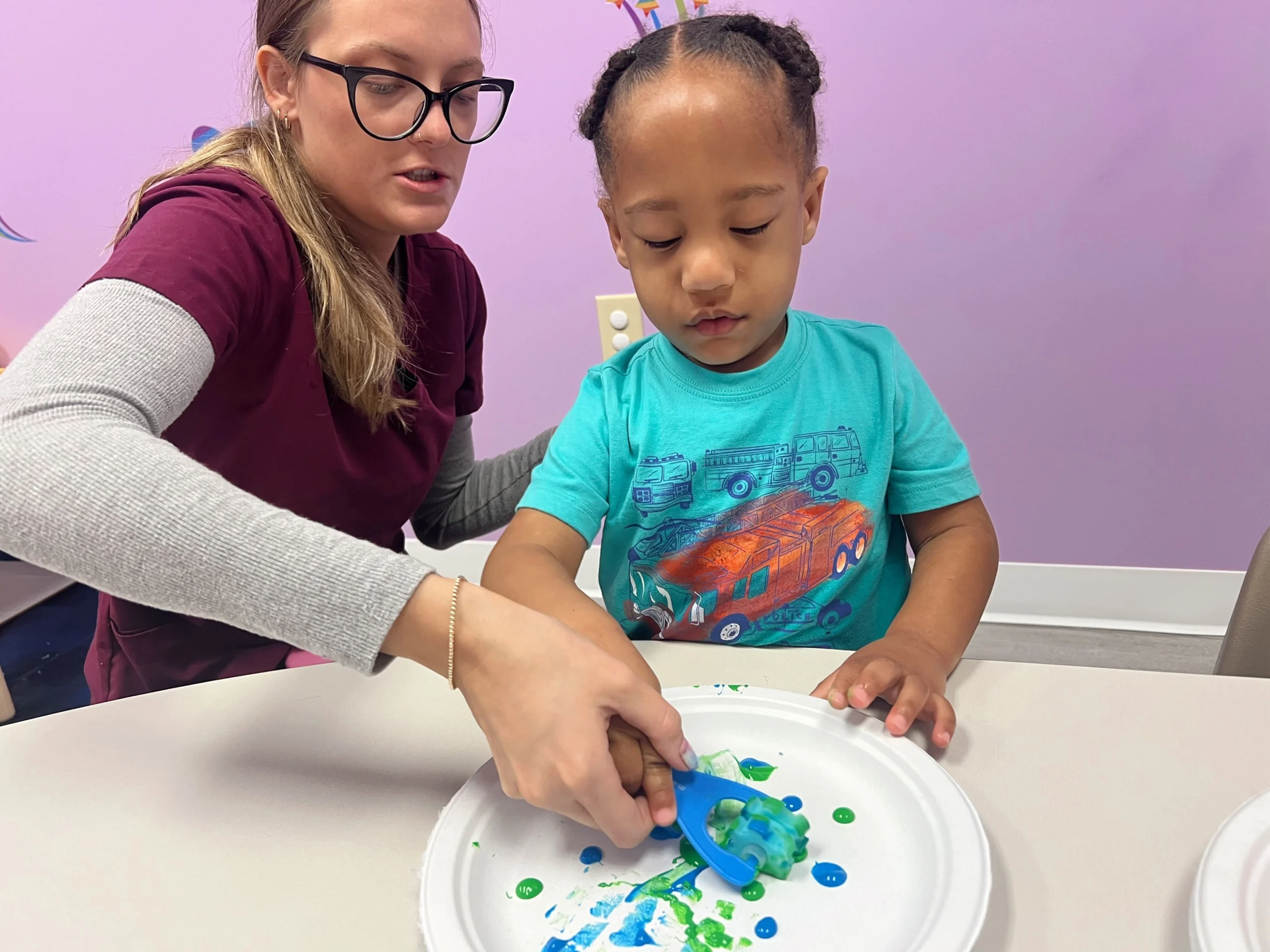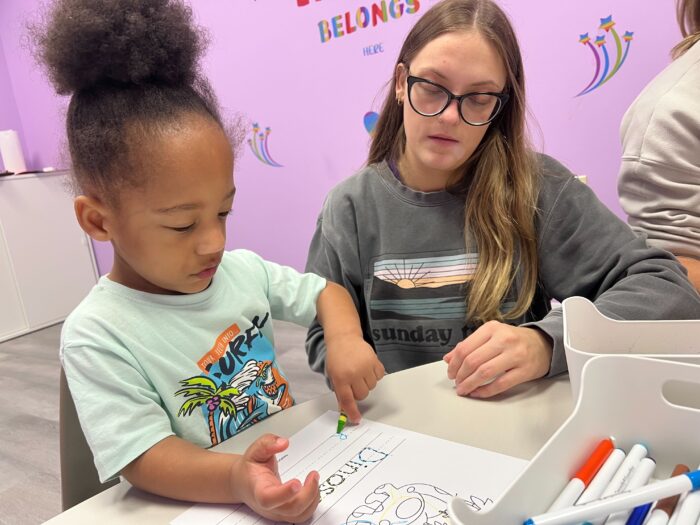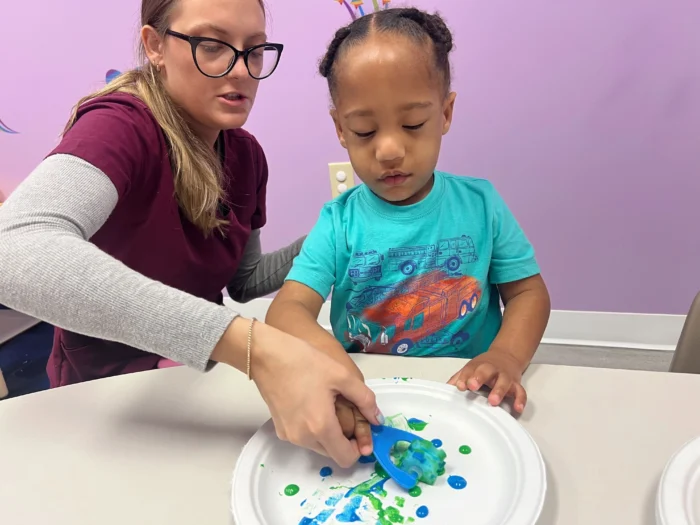
As a parent of a toddler with autism, you’ve probably heard about ABA therapy and how it can have a positive impact on helping your child in their natural development. We understand you have questions, and as parents, we want to help you make informed decisions about your child’s care.
In this guide, we’ll walk you through everything you need to know about ABA therapy for a 2–year–old and give you a better insight into how it works and what to expect, the benefits of this treatment, the techniques it involves, and all the ways it can benefit your child.
So, let’s get started!
What Is ABA Therapy?
Applied Behavior Analysis (ABA) therapy is a gentle, proven approach that helps children with autism feel more comfortable in their worlds. The ultimate goal is to help children grow up in an environment where they feel safe, supported, and loved.
Modern ABA therapy has evolved significantly since its beginnings in the 1960s. Today’s approach is flexible and personalized, carefully tailored to each child’s needs and interests. Numerous studies have shown that ABA can be beneficial for children by helping them understand and interact with their surroundings.
Is Age 2 Too Early for ABA Therapy?
Actually, age 2 can be the perfect time to start ABA therapy. Medical research and our own experience show that early support – ideally before age 3 – can have a huge positive impact on the child’s early years as they begin discovering the world.
Now that autism can be reliably diagnosed as early as 18 months, we can help children grow and learn confidently as their brains develop.
What Does ABA Therapy Look Like for a 2-Year-Old?
Every child is unique, which is why we create personalized programs that work with your toddler’s natural interests and learning style. ABA therapy sessions for toddlers typically last 2-5 hours a day, and while some providers recommend up to 30-40 hours per week, we’ll work with you to find the right schedule that supports your child without overwhelming your family.
We offer several flexible options for where therapy can take place:
- In your home, where your child feels most comfortable
- At school, supporting their educational journey
- At our centers (including soon our center in Charlotte, North Carolina, too)
At Abacus Therapies, your child’s program is designed by a board-certified behavior analyst (BCBA) and carried out by skilled registered behavior technicians (RBTs). Our team works together to create activities that help your child learn and grow while having fun.
Here you can take a look at the profiles of a couple of our highly experienced BCBAs and RBTs: Natalie Schad, Madeline Smith, and Sara Galam.
Common ABA Techniques for Toddlers
These are some of the ABA techniques we commonly use to help your child learn:
- Early Start Denver Model (ESDM): This approach weaves learning into play activities.
- Discrete Trial Training (DTT): Breaking down new skills into small, manageable steps.
- Antecedent-Based Interventions (ABI): Creating comfortable environments that help your child feel supported.
- Picture Exchange Communication System (PECS): Helping your child express their needs and wants.
Because we’re working with 2-year-olds, everything we do involves fun elements. We also share fun activities you can do at home as a family, like storytelling, puzzles, and treasure hunts – all designed to create a loving environment.
Parents are essential for ABA Therapy, so we encourage you to participate in the sessions to learn how to best support your child. Our BCBAs will teach you how to create an environment in which they feel safe, supported, and loved.
ABA Goals for Your 2-Year-Old
Our goal is to help your child learn and grow while celebrating who they are. Here’s what we focus on:
Communication
We help your toddler learn to express their feelings in ways that work for them. We want them to be able to share their needs and emotions.
Developing Daily Skills
By encouraging them and using a step-by-step learning system, we help your child learn daily activities. These are the building blocks that create a foundation for later independence.
Fostering Independence
Everything we do aims to help your child grow more confident and independent. This is achieved by encouraging them to do activities that will boost their self-esteem.
Keep in mind ABA therapy is a long-term treatment that requires dedication and patience.
The Cost of ABA Therapy for a Two–Year–Old
We know that thinking about the cost of ABA therapy can feel overwhelming. Thankfully, it is typically covered by Medicaid and most private insurance plans, though coverage varies by state. In Florida, for example, state-mandated coverage provides up to $36,000 per year, while the coverage for ABA therapy in North Carolina is capped at $40,000 annually.
Certain policies, including self-funded insurance plans, are not subject to state laws.
If you have any questions regarding insurance, our team is here to help you understand your options. We can guide you through coverage questions and help find solutions that work for your family.
The Final Word
Starting ABA therapy as soon as your 2-year-old is diagnosed with autism can help your child grow happily during those early years. At Abacus Therapies, we’re here to support both you and your child every step of the way.
Ready to learn more? We’d love to meet you and your child. Contact us for a free consultation, and let’s talk about how we can support your family.
FAQ
Why would a child need ABA therapy?
ABA therapy helps children with autism grow up in a supportive, loving environment that helps them better interact with their world. Through positive, fun activities, children learn to:
- Communicate their thoughts and feelings
- Connect with others in meaningful ways
- Manage their daily routines confidently
Can autism be treated at 2 years old?
Yes, and early support can make a real difference! Today, autism can be reliably identified in children as young as 18 months old. Starting therapy at age 2 gives your child the opportunity to feel supported from these crucial early years when they’re just starting to discover the world around them.
What is the best age to start ABA therapy?
Research shows that starting ABA therapy early – ideally soon after diagnosis – can have the most positive impact on a child. While children can benefit from ABA therapy at any age, beginning before age 3 would be optimal to take advantage of these important early learning years.



